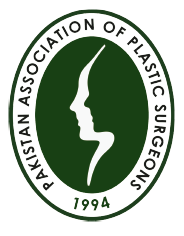A circumcision is the removal of the foreskin(fold of the skin that covers the head of penis) from the penis.
Although It is usually practised in many cultures and religious traditions, it is also performed for medical reasons( eg phimosis/paraphimosis/infections). Usually it is carried out in infancy, but there is no age limit.
SURGERY
The surgery is performed by an experienced surgeon after examination of the perineal area to exclude any abnormality in a sterile environment with aseptic techniques. Parent’s consent is mandatory before the procedure. For local anaesthesia, no fasting is required, for general anaesthesia, 6 hours fasting is recommended.
There are two ways for circumcision:
- Surgical excision and suturing (surgeon assesses the amount of skin to be removed, measures, marks and removes the excess skin. The cut ends are stitched together with dissolvable sutures and dressed with non-adherent dressings
- Plastibell(this involves fitting and tightening a specially designed small plastic ring around the glans foreskin. This ring stops blood reaching the foreskin which as a result then dies and falls off in two weeks.
Both procedure are equally effective with each having their advantages and disadvantages
Post-surgery, loose nappies are advised for infants. Oral painkillers are usually given for pain relief. The wound usually heals within a week and dressings are kept dry during this period. In the case of plastibell, you can give a bath to the baby as there are no stitches or dressing.
CONTRA-INDICATIONS
Any congenital perineal abnormality like Small or buried penis, hypospadias, chordee, deformity of dorsal hood, penile webbing, epispadias, ambiguous genitalia, and bleeding diathesis
FAQs
1. Is circumcision safe?
It is considered a safe procedure with complication rate of 2%
2. What are the complications of the procedure?
These include infection, bleeding, swelling, redness, ulceration, abnormal scarring, loss of sensation, damage to penis, difficulty in urination, psychological and sexual problems. In rare circumstances, The ring may slip and become tight around penis, so you should contact your doctor immediately if that happens.
3. How long does this procedure take?
It usually takes 30 minutes
4. Is it performed under general anaesthesia?
In infants and younger children, it is performed under local anaesthesia, in older children and adults general anaesthesia is usually used.
5. Does it need hospital admission?
Circumcision is performed as day care procedure and patient can go home after they have been given instructions about the care of surgical site by their doctors
6. How long does it take to recover?
Wound healing usually takes 7-10 days.
7. Is circumcision painful?
No. A local or general anaesthetic will be administered so there will not be any pain.
8. Is there any alternative to circumcision?
If a child is not suitable for circumcision then there are a few alternatives
Stretching the foreskin on a daily basis as advised by the doctor
Steroid creams: can be directly applied to the skin and are often used to treat phimosis
But none of the treatment can replace circumcision
Written by : Dr. Sobia Yasmeen
Copyrights: Pakistan association of Plastic Surgeons

